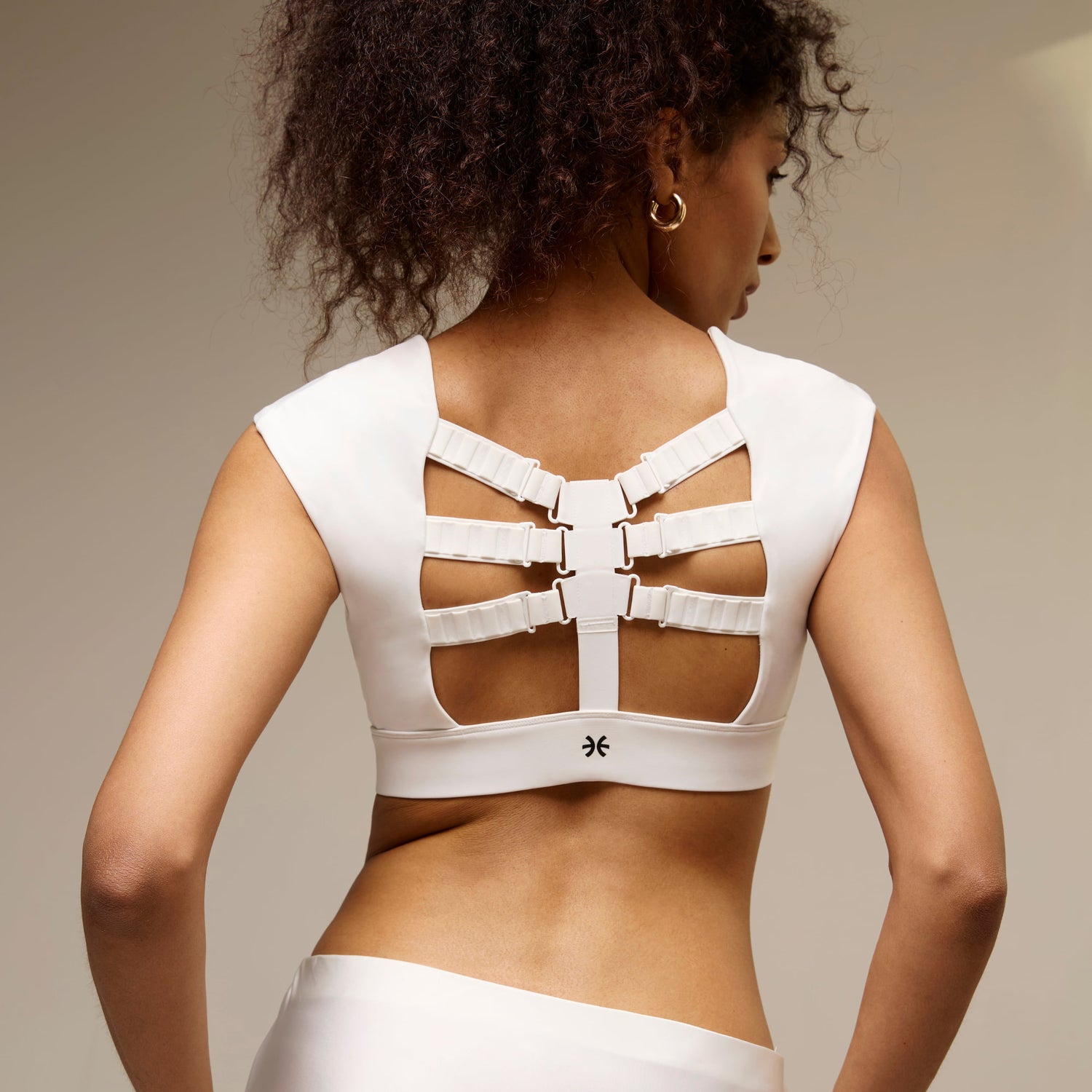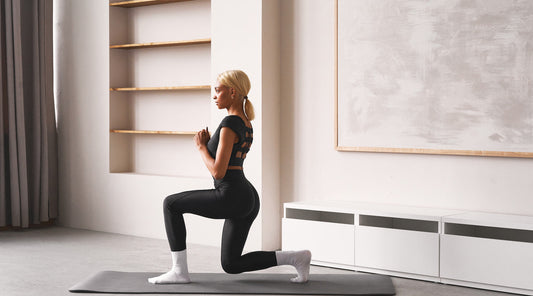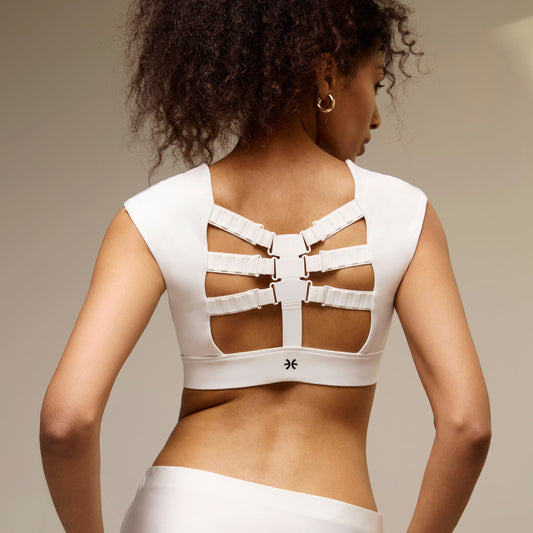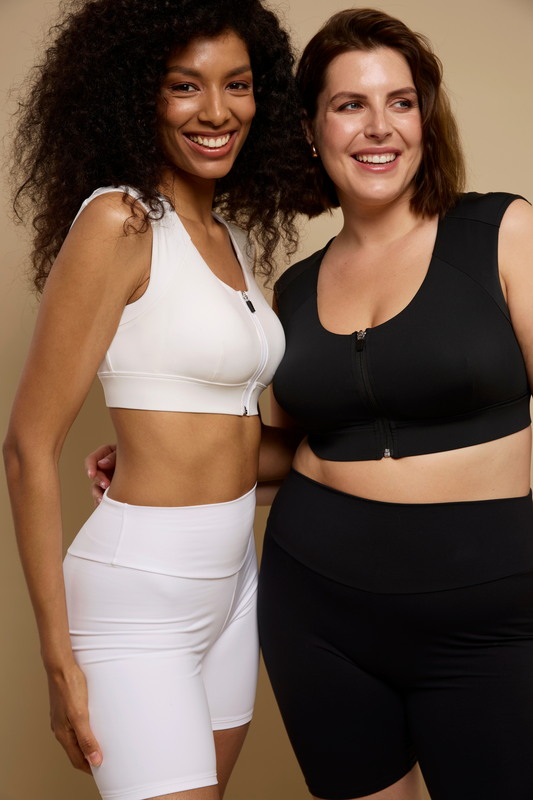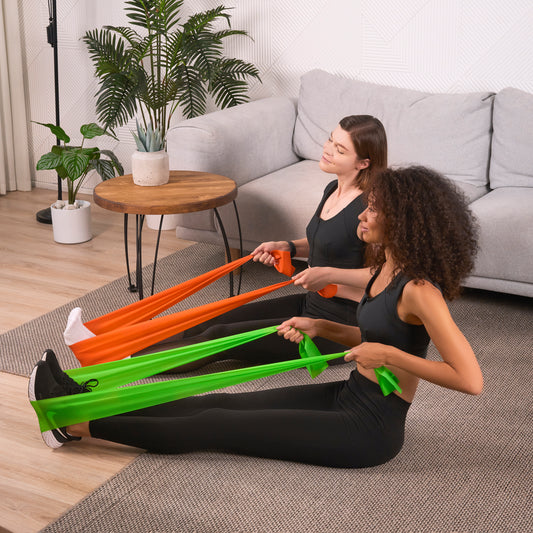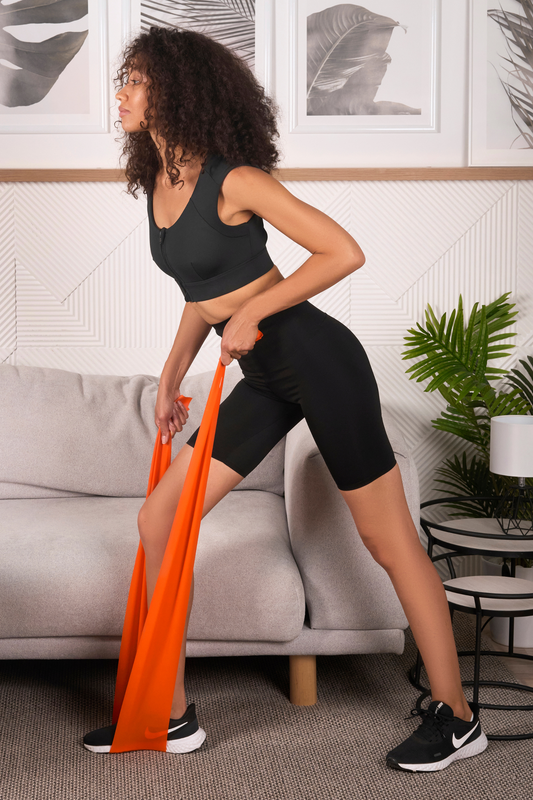One of the main questions we get asked here at Etalon is if it’s ok to wear a posture corrector all day. If you have to stand or sit at a desk for 40+ hours a week, your posture is most likely suffering. The idea of wearing something to help save your spine — instead of having to remind yourself every time you start to hunch — is certainly appealing.
However, you may have read that posture correctors do more harm than good, that they can lead to muscle atrophy, weaken your back, and ultimately make you reliant on them. Truth is, there is actually no evidence to support any of these claims. But should you wear a posture corrector all day?
Let’s take a look at what happens if you wear a posture corrector all day and the best ways to make one work for you.
Factors To Consider Before Wearing a Posture Corrector All Day
Let’s be honest: there are some posture correctors on the market that few of us would want to wear all day long. These are big, bulky, restrictive, and just plain ugly. Meanwhile, there are others like a posture correcting bra, designed to be supportive enough for extended wear without cramping your body or your style.
There are a number of advantages to using a posture corrector, but there are also some drawbacks to wearing one for too long.
Advantages of Wearing a Posture Corrector
A posture corrector is not meant to wrench you into place. If you have one that does, ditch it immediately. The most helpful correctors gently activate and train the muscles around your neck and shoulders, and sometimes your core and lower back, to help you find optimal alignment.
Posture correctors like the Etalon Posture Bra can help:
- Build muscle memory that supports good posture
- Improve proprioception (your awareness of the position of your body)
- Alleviate neck and back pain
- Reduce stress on your joints
- Increase mobility
- Improve your digestion
- Boost your focus and confidence
Posture correctors are also useful for people with certain musculoskeletal conditions or those rehabilitating from various operations. If you have serious back issues or are recovering from a recent injury or surgery, be sure to consult with your doctor before using a posture corrector.
Individual Posture Needs and Goals
Your posture needs are unique to you, which is why a customizable posture corrector is typically your best option. A corrector like the Etalon posture bra can be adjusted for your comfort level and allows you to work on your posture at your own pace.
In general, we don’t recommend that you wear a posture corrector all day. Instead, start slow. This can mean wearing it for just 30 minutes at a time. As you feel more comfortable, build up the amount of time you wear the posture corrector, up to around six to eight hours a day.
Comfort Level With Prolonged Wear
Wear the posture corrector for at least three weeks — an ideal time period for establishing a habit. Adjust the straps when you’re ready for extra support. Continue wearing the posture corrector on a daily basis and you may start to see major improvements in your posture within three months.
Of course, every person will be on a different timeline, but consistency is important. And so is a good attitude. One study found that positive thinking led to more effective results when participants used a lumbar support to help reduce low back pain (1).
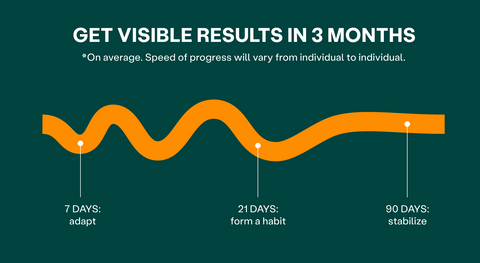
*Timeline of results from the Etalon posture bra wear
Disadvantages of Wearing a Posture Corrector All Day
Is it bad to wear a posture corrector all day? Most healthcare professionals don’t recommend all-day usage. It’s also not necessary. Think of a posture corrector as a training tool. It should help you strengthen your muscles and gain awareness of your body’s alignment so that you can eventually reach good posture more naturally without it.
If you wear a posture corrector all day it could become something of a security blanket. You may feel that you need it. But allowing yourself breaks from it throughout the day can help you practice the newly learned position on your own with a sense of confidence and accomplishment. There’s no specific time that you should wear a posture corrector, but some people may find it more helpful when they’re sitting or standing for long periods of time or toward the end of the day, when their body starts to get tired.
Wearing a posture corrector while sleeping is NOT recommended as it can limit your movement and cause discomfort while lying down. Instead, it’s better to be mindful of your sleeping posture and the firmness of your mattress.
Tips for Wearing a Posture Corrector
You won’t fix your posture in a day, but you can certainly improve it within several months. To get the most out of your posture corrector, make sure it fits properly, allow yourself breaks from it, and add some stretches to complement its posture-promoting effects.
Proper Fitting and Adjustments
Any worthwhile posture corrector will offer a sizing guide. Follow it. Take the time to gather your measurements, including your bust and rib cage. Have someone help if you need it. An ill-fitting posture corrector will be uncomfortable and ineffective.
With the Etalon bra, we recommend starting at the first setting and staying there for at least three weeks before adjusting to the next setting. This allows your body enough time to get used to the new position. When you move on to the next setting, you’ll begin training those muscles around the neck and shoulders even more. Think of it as going up in weight at the gym.
Regular Breaks and Stretching Exercises
Instead of wearing the posture corrector all day, put it on during times when you know that your posture will likely take a hit — perhaps that’s at your desk, in the kitchen, on a walk, or at the gym. You can wear it for several hours at a time, but don’t be afraid to take regular breaks from it. A rest period is also a good time to stretch any tight areas that could affect your posture.
Here are three quick exercises to stretch the muscles in your neck, shoulders, chest, and back:
- Child’s pose. Sit back on your heels, extend your arms forward, and lower your forehead to the floor or a block.
- Cat-cow. In a tabletop position, round your back and tuck in your chin (“cat”), then arch your back and lift your head and tailbone (“cow”).
- Chest opener. While standing or sitting upright, interlace your fingers behind your back (or grab onto a towel with both hands), lift your arms, and squeeze your shoulder blades together.
You can also make use of resistance bands to help you get further into these stretches and to try other posture-promoting exercises like these.
Getting Started With a Posture Corrector
Your number one priority when choosing a posture corrector is to make sure it fits properly. A good fit means you will feel the gentle tug at your shoulders but without pain or discomfort. It may feel a little weird at first, but that’s just your body getting used to a new garment and new position.
Start slow. You can always increase the time you wear it as you start to feel more comfortable with it. There’s no need to wear a posture corrector all day. Instead, we recommend using it during everyday activities that may be affecting your posture the most — whether that’s at the office or on the couch. You can wear a posture corrector for several hours at a time, but feel free to take breaks from it so that your body can start to find better posture on its own.
SOURCES:
- European Spine Journal. Determinants of the intention for using a lumbar support among home care workers with recurrent low back pain. https://pubmed.ncbi.nlm.nih.gov/20490876/
FAQs
Are there specific types of posture correctors that are better suited for long-term wear throughout the day?
How does wearing a posture corrector all day affect muscle development and posture habits over time?
What guidelines and precautions should I follow when wearing a posture corrector for prolonged periods to ensure safety and effectiveness?
Trending
Try Etalon posture improvement products
